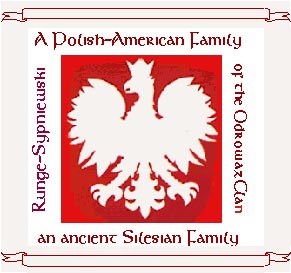

Heraldry
The roots of heraldry go back to Ancient Egypt, when shields or symbols were carried to battle. However, in Europe, heraldry is a hereditary use of an arrangement of charges or devices in a shield. Between 1135 and 1155 heraldic shields were adopted in England, France, Germany, Spain, and Italy. The Viking's sailing ships had arms displayed on their sails. The Scottish clans had the lion, Anglo-Saxons had the horse, while Charlesmagne had the eagle, which today is used in many German arms.
Heraldry in its early stages had a strong military association, and was used for identification of knights in armor on the battlefield. A man in armor was very difficult to recognize. Thomas Woodcock states in The Oxford Guide to Heraldry, that "William the Conquerer ... was forced to remove his helmet, in the thick of the battle of Hastings, in order to identify himself to his followers, who thought he had been killed." Theorists say that "arms were painted on shields so warriors could be recognized by their followers after the development of the closed helmet, which completely concealed a man's face" (Woodcock). Arms were also worn on knight's surcoats - the tunic that they wore over their armour - thus the expression "coat of arms."
A man held land in return for military service. The hereditary nature of heraldry is from feudal practices. Knights were the first nobility. However, others argue that land barons held the first true arms. Land barons held vast estates, and went to great lengths to "shield" themselves from the burdens of knighthood. High ranking landowners held arms as a "vanity" rather than a practical military device, much like the painting of faces or wearing of colorful clothes.
Tournaments began in France in the 11th century and were a means for knights to train for battle. Knights travelled around the world to make their fortunes in tournaments and it became a great display of pageantry. Arms (weapons) were normally only held by the knightly class.
Arms thus became the rank of nobles. Ambitious knights were paid well and given titles by their land ownings. This is proven by the fact that all of William the Conqueror's men soon took great portions of the land in England in the form of thanks for backing the Conquerer. He rewarded them after his conquest.
Only in certain cases could one of the lesser ranks rise in standing. For example, in 1389, John de Kyngeston was challenged to a joust by a French knight. Richard III made Kyngeston a gentleman and Esquire, and gave him a coats of arms and weapons (not all that unlike the way we pay our own athletes).
Leaders were generally land owners of the upper class; therefore, everyone who had an arm was a gentleman and every gentleman had arms. Gentlemen existed before there were coats of arms and later the connection between the two evolved into what it is today (vanity and status).
Unmarried daughters and widows used their father's arms, or their late husband's and father's arms on a lozenge. Married women bore their husband's and father's arms as a shield (Woodcock).
Heraldry can easily be seen as an art form. Heraldry began in the twelfth century. At this time, there was an emphasis on decoration. Visual art had much to do with its development, and art has always been a part of this. Crests and arms were not only for identification in battle, but for visual enjoyment and impact. Artist often elolved many a fanciful creature or plant into their own version (Gwynn-Jones, Peter, The Art of Heraldry: Origins, Symbols, and Designs. New York: Barnes and Noble Books, 1998). Since arms meant weapons too - that meant that only "gentlemen" held weapons. "Gentleman" means "a man entitled to bear arms." Grants of arms thus were patents of gentility.
Many descend from a long line of "armigerous ancestors" all for the glorious deeds (Fox-Davies, A Guide to Heraldry).
visitor since October 15, 2003
Owner: Raymond Sypniewski, B.S., M.A.
Email Margaret:
Margaret
This page was last updated on July 14, 2013